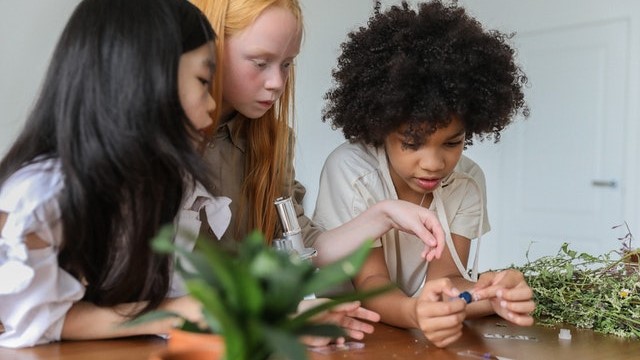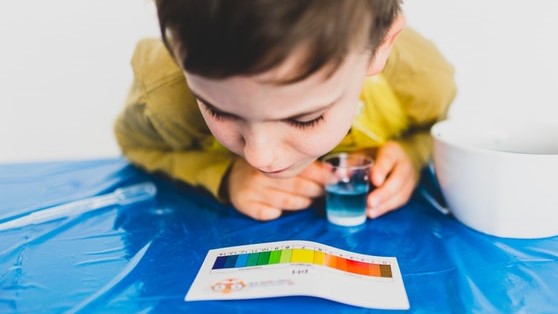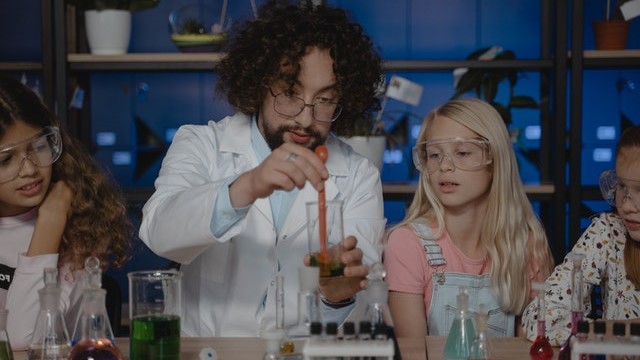


Content:
To prosper in this modern age of innovation requires the capacity to grasp the essentials of diverse problems, to recognise meaningful patterns, to retrieve and apply relevant knowledge.
Science education has the potential for helping the development of the required abilities and understanding by focusing on developing powerful ideas of science and ideas about the nature of scientific activity and its applications.
Scientific literacy refers to an individual’s scientific knowledge and its use. It allows an understanding of the scientific process and makes it possible to apply evidence-based knowledge across a broad range of issues that require individual and collective action (such as responding to COVID-19 and climate change, or understanding AI, machine learning and other new technologies).
Science Education is a key area for the InterAcademy Partnership (IAP), whose Science Education Programme (SEP) is led by a Global Council of experts that defines and implements its annual activities on global and regional scales.

Science education should enhance learners’ curiosity, wonder and questioning, building on their natural inclination to seek meaning and understanding of the world around. Scientific inquiry should be introduced and encountered by school students as an activity that can be carried out by everyone including themselves.
They should have personal experiences of finding out about and of making connections between new and previous experiences that not only bring excitement and satisfaction but also the realisation that they can add to their knowledge through active inquiry. Both the process and product of scientific activity can evoke a positive emotional response which motivates further learning.

Inquiry-Based Science Education (IBSE) adopts an investigative approach to teaching and learning where students are provided with opportunities to investigate a problem, search for possible solutions, make observations, ask questions, test out ideas, and think creatively and use their intuition. In this sense, inquiry-based science involves students doing science where they have opportunities to explore possible solutions, develop explanations for the phenomena under investigation, elaborate on concepts and processes, and evaluate or assess their understandings in the light of available evidence.
This approach to teaching relies on teachers recognizing the importance of presenting problems to students that will challenge their current conceptual understandings so they are forced to reconcile anomalous thinking and construct new understandings.
IAP seeks to reform and develop science education on a global scale, especially in primary and secondary schools, with a pedagogy based on IBSE because it provides opportunities for students to see how well their ideas work in authentic situations rather than in abstract discussions. Students build knowledge through testing ideas, discussing their understanding with teachers and their peers, and through interacting with scientific phenomena.

An example of inquiry-based learning is 'COVID-19! How can I protect myself and others?' (free download here), a new rapid-response guide for youth aged 8–17 developed as a response to the COVID-19 pandemic by the Smithsonian Science Education Center, in collaboration with the World Health Organization (WHO) and IAP.
The guide, which is based on the UN Sustainable Development Goals (SDGs), aims to help young people understand the science and social science of COVID-19 as well as help them take actions to keep themselves, their families and communities safe.
Through a set of seven cohesive student-led tasks, participants engage in the activities to answer questions previously defined by their peers. The questions explore the impact of COVID-19 on the world, how to practice hand and respiratory hygiene and physical distancing, and how to research more information about COVID-19. The final task teaches youth how they can take action on the new scientific knowledge they learn to improve their health and the health of others. Each task is designed to be completed at home.

Food! is a freely available community research guide that uses the United Nations Sustainable Development Goals (SDGs) as a framework to focus on sustainable actions that are defined and implemented by students (download it here).
This module effectively promotes excellence within science education while fostering pioneering approaches to empower and unite educators around the world. Mosquito! addresses the problem of diseases transmitted by mosquitoes from an educational point of view (download it here).
You can download more teaching resources and guides here.
The IAP publication “Working with Big Ideas of Science Education” (available for free here) includes this list of ideas that all students should have had opportunity to learn by the end of compulsory education:
Atoms are the building blocks of all matter, living and non-living. The behaviour and arrangement of the atoms explains the properties of different materials. In chemical reactions atoms are rearranged to form new substances. Each atom has a nucleus containing neutrons and protons, surrounded by electrons. The opposite electric charges of protons and electrons attract each other, keeping atoms together and accounting for the formation of some compounds.
All objects have an effect on other objects without being in contact with them. In some cases the effect travels out from the source to the receiver in the form of radiation (e.g. visible light). In other cases action at a distance is explained in terms of the existence of a field of influence between objects, such as a magnetic, electric or gravitational field. Gravity is a universal force of attraction between all objects however large or small, keeping the planets in orbit round the Sun and causing terrestrial objects to fall towards the centre of the Earth.
A force acting on an object is not seen directly but is detected by its effect on the object’s motion or shape. If an object is not moving the forces acting on it are equal in size and opposite in direction, balancing each other. Since gravity affects all objects on Earth there is always another force opposing gravity when an object is at rest. Unbalanced forces cause change in movement in the direction of the net force. When opposing forces acting on an object are not in the same line they cause the object to turn or twist. This effect is used in some simple machines.
Many processes or events involve changes and require an energy source to make them happen. Energy can be transferred from one body or group of bodies to another in various ways. In these processes some energy becomes less easy to use. Energy cannot be created or destroyed. Once energy has been released by burning a fossil fuel with oxygen, some of it is no longer available in a form that is as convenient to use.
Radiation from the Sun heats the Earth’s surface and causes convection currents in the air and oceans, creating climates. Below the surface heat from the Earth’s interior causes movement in the molten rock. This in turn leads to movement of the plates which form the Earth’s crust, creating volcanoes and earthquakes. The solid surface is constantly changing through the formation and weathering of rock.
Our Sun and eight planets and other smaller objects orbiting it comprise the solar system. Day and night and the seasons are explained by the orientation and rotation of the Earth as it moves round the Sun. The solar system is part of a galaxy of stars, gas and dust, one of many billions in the Universe, enormous distances apart. Many stars appear to have planets.
All organisms are constituted of one or more cells. Multi-cellular organisms have cells that are differentiated according to their function. All the basic functions of life are the result of what happens inside the cells which make up an organism. Growth is the result of multiple cell divisions.
Food provides materials and energy for organisms to carry out the basic functions of life and to grow. Green plants and some bacteria are able to use energy from the Sun to generate complex food molecules. Animals obtain energy by breaking down complex food molecules and are ultimately dependent on green plants as their source of energy. In any ecosystem there is competition among species for the energy resources and materials they need to live and reproduce.
Genetic information in a cell is held in the chemical DNA. Genes determine the development and structure of organisms. In asexual reproduction all the genes in the offspring come from one parent. In sexual reproduction half of the genes come from each parent.
All life today is directly descended from a universal common ancestor that was a simple one-celled organism. Over countless generations changes resulting from natural diversity within a species lead to the selection of those individuals best suited to survive under certain conditions. Species not able to respond sufficiently to changes in their environment become extinct.
Science is a search to explain and understand phenomena in the natural world. There is no single scientific method for doing this; the diversity of natural phenomena requires a diversity of methods and instruments to generate and test scientific explanations. Often an explanation is in terms of the factors that have to be present for an event to take place as shown by evidence from observations and experiments. In other cases supporting evidence is based on correlations revealed by patterns in systematic observation.
A scientific theory or model representing relationships between variables of a natural phenomenon must fit the observations available at the time and lead to predictions that can be tested. Any theory or model is provisional and subject to revision in the light of new data even though it may have led to predictions in accord with data in the past.
The use of scientific ideas in engineering and technologies has made considerable changes in many aspects of human activity. Advances in technologies enable further scientific activity; in turn this increases understanding of the natural world. In some areas of human activity technology is ahead of scientific ideas, but in others scientific ideas precede technology.
The use of scientific knowledge in technologies makes many innovations possible. Whether or not particular applications of science are desirable is a matter that cannot be addressed using scientific knowledge alone. Ethical and moral judgments may be needed, based on such considerations as justice or equity, human safety, and impacts on people and the environment.
Do not miss news and updates on the activities, opportunities and events of The InterAcademy Partnership (IAP), its regional networks, member academies and other partner organisations: subscribe to our quarterly newsletter, and follow us on Twitter, LinkedIn, and Youtube.
